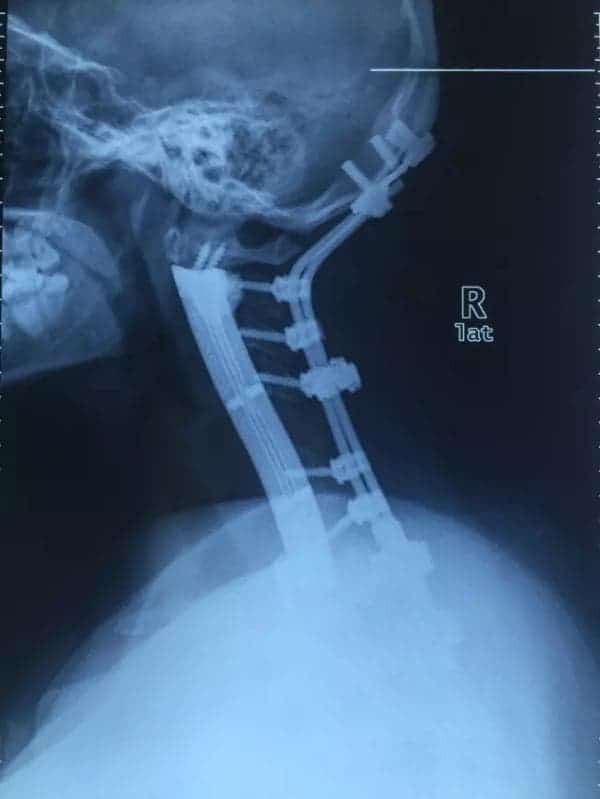A Shanghai hospital reported the replacement of a highly complex cervical vertebra with 3D printed titanium implants.

The 28-year-old patient (who has not been named, going under the pseudonym of Xiao Wen) had been diagnosed with chondrosarcoma, one of the most dangerous and difficult to treat cancers. The tumor was located directly on her neck, expanding on six of the seven bones of the cervical vertebra. Chemotherapy and radiation are not very effective in most cases since there’s a good chance of the cancer returning, so doctors decided to remove the tumor.
Needless to say, that’s no easy feat.
Famed spinal surgeon Xiao Jianru and his team spent three weeks building artificial bones to replace her biological ones. Initially, they used imaging to create a life-size 3D printed model of the affected vertebrae and the tumor. They chose a titanium alloy and 3D printed it into the desired shape but even after the 14-centimeter (5.5-inch) bones were built, the outcome of the surgery was uncertain.

Professor Xiao Jianru, an orthopedic surgeon with the hospital, said in a translated quote:
“The tumor volume is huge, the operation is extremely difficult, but still can be removed, we work together!”
The surgery took 13 grueling hours in total and was the first of its kind. At first, doctors carefully removed the cancerous vertebra, and then slowly replaced them with the bones they had created. Accomplishing all this without harming the patient was indeed a titanic work, made even more difficult by the patient’s physiology. Xiao Wen was overweight and had a short neck. The location of the tumor around the right cerebral artery and cervical nerve root was also particularly tricky.
Doctors were aware of dramatic potential complications: paralysis was on the list, as was overall dysfunction of the cervical spinal cord. But in the end, the procedure was successful. Xiao Wen woke up in control of her body and she can already walk, although she can’t comfortably turn her head around or move her neck. But in the grand scheme of things, that’s really not a concern.

It’s not the first time something like this was carried out at Shanghai Changzheng Hospital, one of the world’s largest centers for spinal tumor treatment. Just last year, Xiao’s team also used 3D printed technology to replace parts of a patient’s cervical vertebra and thoracic vertebra.


